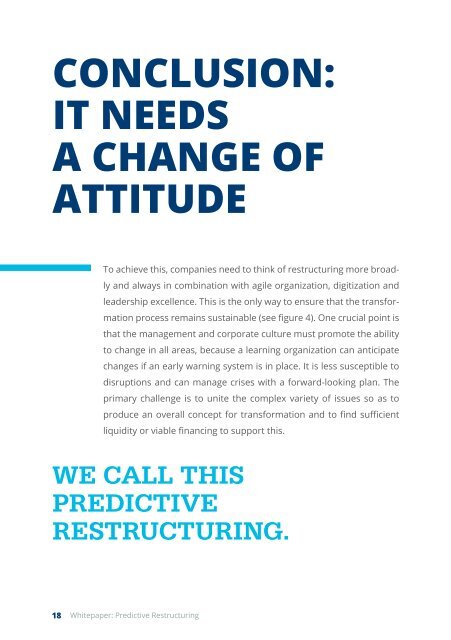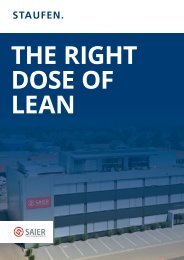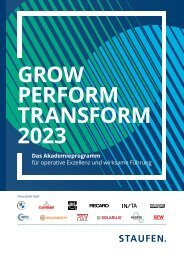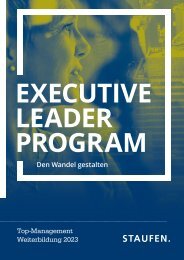whitepaper_staufen_predictive_restructuring_en_2019
Restructuring and turnaround projects have always been implemented only once a company has started to see negative earnings, or even experience a real fundamental financial crisis. In an increasingly dynamic world, however, this view is overly short-sighted. Volatile mar kets, aggressive competitors and investors, flexible working and digital change mean that changes are taking place with increasing rapidity. As a result, even established companies that are (still) seeing good earnings now face the challenge of securing their existing success at the same time as they are managing the transition to new business models and structures.
Restructuring and turnaround projects have always been implemented
only once a company has started to see negative earnings, or even experience a real fundamental financial crisis. In an increasingly dynamic world, however, this view is overly short-sighted. Volatile mar
kets, aggressive competitors and investors, flexible working and digital change mean that changes are taking place with increasing rapidity. As a result, even established companies that are (still) seeing good earnings now face the challenge of securing their existing success at the same time as they are managing the transition to new business models and structures.
You also want an ePaper? Increase the reach of your titles
YUMPU automatically turns print PDFs into web optimized ePapers that Google loves.
CONCLUSION:<br />
IT NEEDS<br />
A CHANGE OF<br />
ATTITUDE<br />
To achieve this, companies need to think of <strong>restructuring</strong> more broadly<br />
and always in combination with agile organization, digitization and<br />
leadership excell<strong>en</strong>ce. This is the only way to <strong>en</strong>sure that the transformation<br />
process remains sustainable (see figure 4). One crucial point is<br />
that the managem<strong>en</strong>t and corporate culture must promote the ability<br />
to change in all areas, because a learning organization can anticipate<br />
changes if an early warning system is in place. It is less susceptible to<br />
disruptions and can manage crises with a forward-looking plan. The<br />
primary chall<strong>en</strong>ge is to unite the complex variety of issues so as to<br />
produce an overall concept for transformation and to find suffici<strong>en</strong>t<br />
liquidity or viable financing to support this.<br />
WE CALL THIS<br />
PREDICTIVE<br />
RESTRUCTURING.<br />
18 Whitepaper: Predictive Restructuring

















